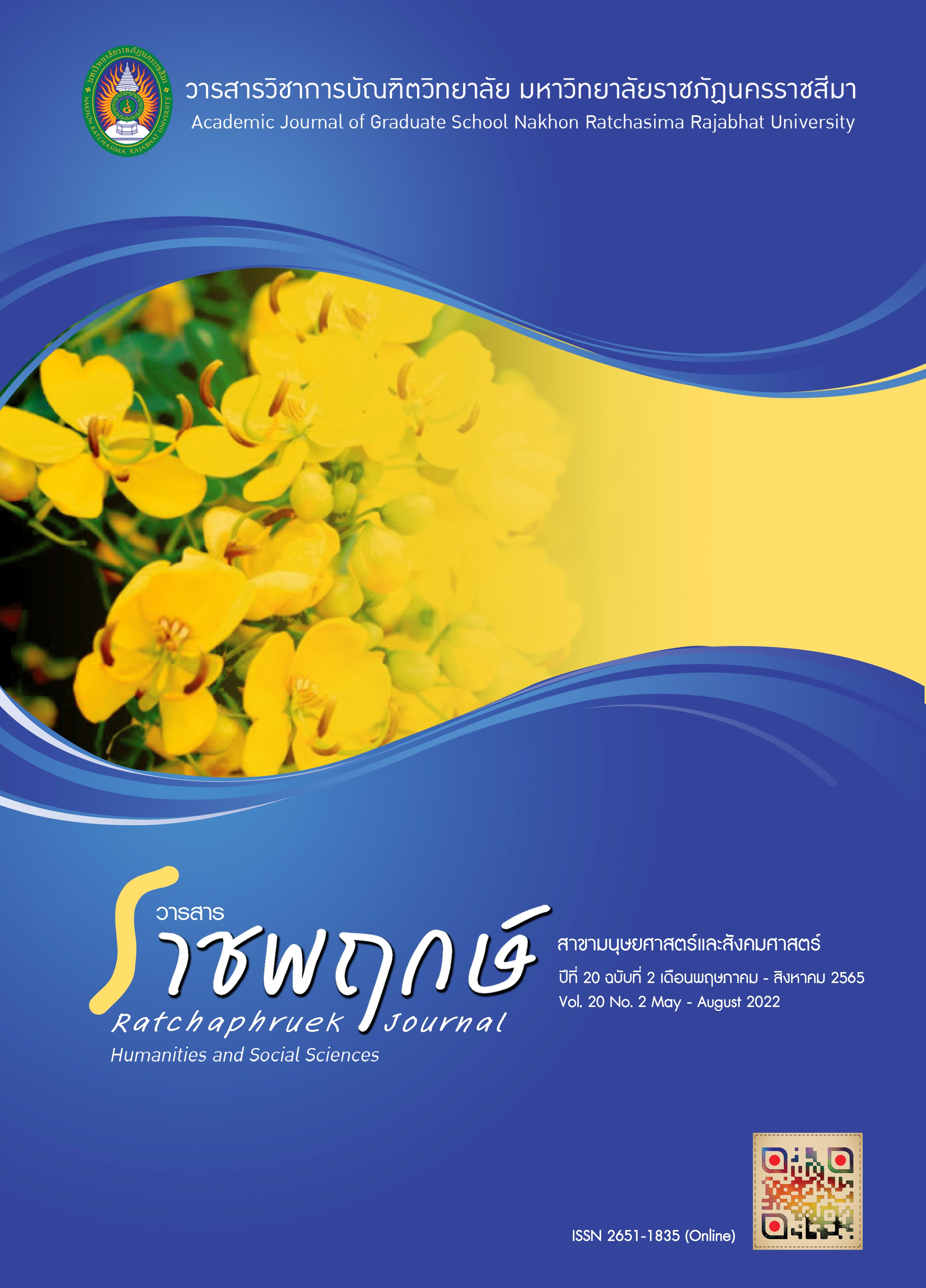ปัจจัยที่ส่งผลต่อคุณภาพการให้บริการของสำนักงานอัยการจังหวัดจันทบุรี
Main Article Content
บทคัดย่อ
การวิจัยนี้ มีวัตถุประสงค์เพื่อ 1) ศึกษาระดับปัจจัยกำหนดคุณภาพการให้บริการของสำนักงานอัยการจังหวัดจันทบุรี 2) ศึกษาความคิดเห็นเกี่ยวกับคุณภาพการให้บริการของสำนักงานอัยการจังหวัดจันทบุรี 3) ศึกษาปัจจัยที่ส่งผลต่อคุณภาพการให้บริการของสำนักงานอัยการจังหวัดจันทบุรี กลุ่มตัวอย่าง ได้แก่เจ้าหน้าที่ตำรวจ และประชาชนที่มาติดต่อขอรับบริการกับสำนักงานอัยการจังหวัดจันทบุรี จำนวน 400 คน คำนวณโดยใช้สูตรของ Cochran (1953) ระดับความเชื่อมั่น 95% และได้กำหนดอัตราส่วนของผู้มารับบริการ เป็นร้อยละ 30: 70 ได้แก่ เจ้าหน้าที่ตำรวจ 120 คน และประชาชนที่มาติดต่อขอรับบริการ จำนวน 280 คน และใช้วิธีการเลือกกลุ่มตัวอย่างแบบบังเอิญ เครื่องมือที่ใช้ในการวิจัยเป็นแบบสอบถาม แบ่งออกเป็น 3 ตอน ดังนี้ ตอนที่ 1 เป็นข้อคำถามเกี่ยวกับปัจจัยส่วนบุคคล ตอนที่ 2 เป็นแบบสอบถามเกี่ยวกับระดับปัจจัยกำหนดคุณภาพการให้บริการของสำนักงานอัยการจังหวัดจันทบุรี จำนวน 20 ข้อ มีค่าความเชื่อมั่น เท่ากับ 0.953 ตอนที่ 3 เป็นแบบสอบถามเกี่ยวกับระดับคุณภาพการให้บริการของสำนักงานอัยการจังหวัดจันทบุรี จำนวน 20 ข้อ มีค่าความเชื่อมั่น เท่ากับ 0.933 และค่าความเชื่อมั่นทั้งฉบับ เท่ากับ 0.967 สถิติที่ใช้ ได้แก่ ค่าร้อยละ การแจกแจงความถี่ ค่าเฉลี่ย ส่วนเบี่ยงเบนมาตรฐาน และการวิเคราะห์การถดถอยพหุคูณ
ผลการวิจัย พบว่า 1) ปัจจัยที่สามารถกำหนดคุณภาพการให้บริการของสำนักงานอัยการจังหวัดจันทบุรีมากที่สุด คือ ด้านบุคลากรผู้ให้บริการ 2) คุณภาพการให้บริการของสำนักงานอัยการจังหวัดจันทบุรี โดยภาพรวมอยู่ในระดับมาก เมื่อพิจารณาเป็นรายด้าน พบว่า ด้านที่มีความคิดเห็นว่าคุณภาพการให้บริการสูงสุดคือ ด้านความเชื่อมั่นและไว้วางใจต่อการให้บริการ 3) ปัจจัยที่ส่งผลต่อคุณภาพการให้บริการของสำนักงานอัยการจังหวัดจันทบุรี อย่างมีนัยสำคัญทางสถิติในระดับนัยสำคัญ .05 เรียงลำดับจากมากไปหาน้อย คือ ด้านบุคลากรผู้ให้บริการ ด้านโครงสร้าง และสถานที่บริการและด้านเทคโนโลยีและช่องทางการสื่อสาร โดยตัวแปรทั้ง 4 ด้าน สามารถร่วมกันพยากรณ์คุณภาพการให้บริการของสำนักงานอัยการจังหวัดจันทบุรีได้ร้อยละ 59.70
Article Details

This work is licensed under a Creative Commons Attribution-NonCommercial-NoDerivatives 4.0 International License.
References
ณัฐกรณ์ ยาวขันแก้ว. (2560). ปัจจัยที่ส่งผลต่อความพึงพอใจในงานบริการด้านวิศวกรรม กรณีศึกษา บริษัท มิตซูบิชิ อีเล็กทริค แฟคทอรี่ ออโตแมนชั่น (ประเทศไทย) จำกัด(วิทยานิพนธ์มหาบัณฑิต, มหาวิทยาลัยเทคโนโลยีราชมงคลกรุงเทพ).
เทพศักดิ์ บุญรัตนพันธ์. (2558). ชุดวิชาแนวคิด ทฤษฎี และหลักการรัฐประศาสนศาสตร์หน่วยที่ 5: รัฐประศาสนศาสตร์กับการให้บริการสาธารณะ (พิมพ์ครั้งที่ 10). กรุงเทพฯ: มหาวิทยาลัยสุโขทัยธรรมาธิราช.
ผู้จัดการออนไลน์. (2563). แฟนสาว สจ. ขับรถชนดับร้อง “สิระ” หลัง อสส. ยกฟ้องคดีคล้าย “บอส”. สืบค้นเมื่อ 1 กุมภาพันธ์ 2564, จาก https://mgronline.com/politics/detail/9630000081390
พรไพรินทร์ พฤฒิรัตน์. (2560). ปัจจัยที่ส่งผลต่อคุณภาพการให้บริการของสำนักงานอัยการคุ้มครองสิทธิและช่วยเหลือทางกฎหมายและการบังคับคดีจังหวัดนครราชสีมา (ภาคนิพนธ์มหาบัณฑิต, มหาวิทยาลัยราชภัฏนครราชสีมา).
รัฐธรรมนูญแห่งราชอาณาจักรไทย พ.ศ. 2560. (2560, 6 เมษายน). ราชกิจจานุเบกษา. เล่ม 134 ตอนที่ 40 ก, หน้า 19.
รัตดามาศ คำสวนจิก. (2559). ความคิดเห็นของผู้รับบริการต่อคุณภาพการให้บริการของส่วนคดีศาลจังหวัดร้อยเอ็ด (วิทยานิพนธ์มหาบัณฑิต, มหาวิทยาลัยราชภัฏมหาสารคาม).
ศิริวรรณ เสรีรัตน์. (2560). การบริหารการตลาดยุคใหม่ Marketing Management (ฉบับปรับปรุงใหม่ ปี 2560). กรุงเทพฯ: Diamond In Business World.
สำนักงานคณะกรรมการข้าราชการพลเรือน. (2545). การปฏิรูประบบราชการบริหาร. กรุงเทพฯ: อาทิตย์โพรดักส์ กรุ๊ป.
สำนักงานอัยการจังหวัดจันทบุรี. (2563). รายงานสถิติการยื่นหนังสือร้องเรียนหรือร้องขอความเป็นธรรม ประจำปี 2563. จันทบุรี: ผู้แต่ง.
สำนักงานอัยการจังหวัดจันทบุรี. (2564). ภารกิจหน้าที่ของสำนักงานอัยการจังหวัดจันทบุรี. สืบค้นเมื่อ 7 มกราคม 2564, จาก http://www.chan.ago.go.th/index.php/2014-06-29-17-27-24
สำนักงานอัยการสูงสุด. (2562ก). นโยบายการบริหารงานของอัยการสูงสุด นายวงศ์สกุล กิตติพรหมวงศ์ อัยการสูงสุด (2562-2564). สืบค้นเมื่อ 6 ธันวาคม 2563, จาก https://www2.ago.go.th/index.php/about/manage/9-newsago/377-policy-2562
สำนักงานอัยการสูงสุด. (2562ข). คู่มือการประเมินประสิทธิภาพ การปฏิบัติราชการของสำนักงานอัยการสูงสุด ประจำปีงบประมาณ พ.ศ. 2562. กรุงเทพฯ: สำนักงานพัฒนาระบบบริหาร.
Cochran, W. G. (1953). Sampling techniques. New York: John Wiley & Sons.
Parasuraman, A., Zeithaml, V. A., & Berry, L. L. (2013). A conceptual model of service quality and its implications for future research. Journal of Marketing, 49, pp. 41-50.

